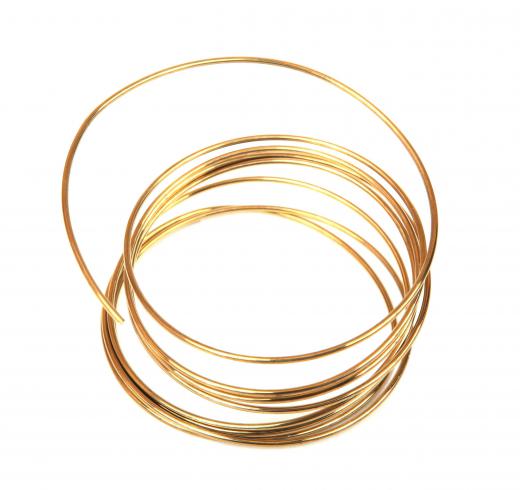At face value, "wire bonding" would appear to be just another term for welding, but the process actually is quite a bit more complex because there are added variables involved. The wire bonding process is performed on electronic devices in order to connect various components together permanently, but because of the delicacy of the project, only gold, aluminum and copper normally are applied, because of their conductivity and relative bonding temperatures. This method is completed by using either a ball bonding or a wedge bonding technique that combines low heat, ultrasonic energy and trace amounts of pressure to avoid damaging the electronic circuit. The microchip or corresponding pad can be damaged easily by using improper execution, so practicing on a previously damaged or disposable chip is highly recommended before one attempts wire bonding.
Wire bonding primarily is used within almost any type of semiconductor because of its cost efficiency and ease of application. In optimal environments, as many as 10 bonds per second can be created. This method varies slightly with each type of metal used because of their respective elemental properties. The two types of wire bonds typically used are the ball bond and the wedge bond.

Although the best choice for a ball bond is pure gold, copper has become a popular alternative because of its relative expense and availability. This process requires a needle-like device, not much different from what a seamstress would use, to hold the wire in place while extremely high voltage is applied. The tension along the surface causes the molten metal to form into a ball shape, hence the name of the process. When copper is used for ball bonding, nitrogen is used in gaseous form to prevent copper oxide from forming during the wire bonding procedure.
Wedge bonding uses a tool to create pressure on the wire as it is applied to the microchip. After the wire is securely held in place, ultrasonic energy is applied to the surface, and a solid bond is created in multiple areas. Wedge bonding requires almost double the time that a similar ball bond would, but it also is considered a much more stable connection, and it can be completed with aluminum or several other alloys and metals as well.
It is not recommended for an amateur to attempt either ball bonding or wedge bonding without first receiving proper instruction, because of the sensitive nature of wire bonding and the risk involved with damaging electrical circuitry. Technology that has been developed allowed both of these processes to be completely automated, and wire bonding is rarely completed by hand anymore. The end result is a much more precise connection that tends to outlast those creating by traditional hand methods of wire bonding.
